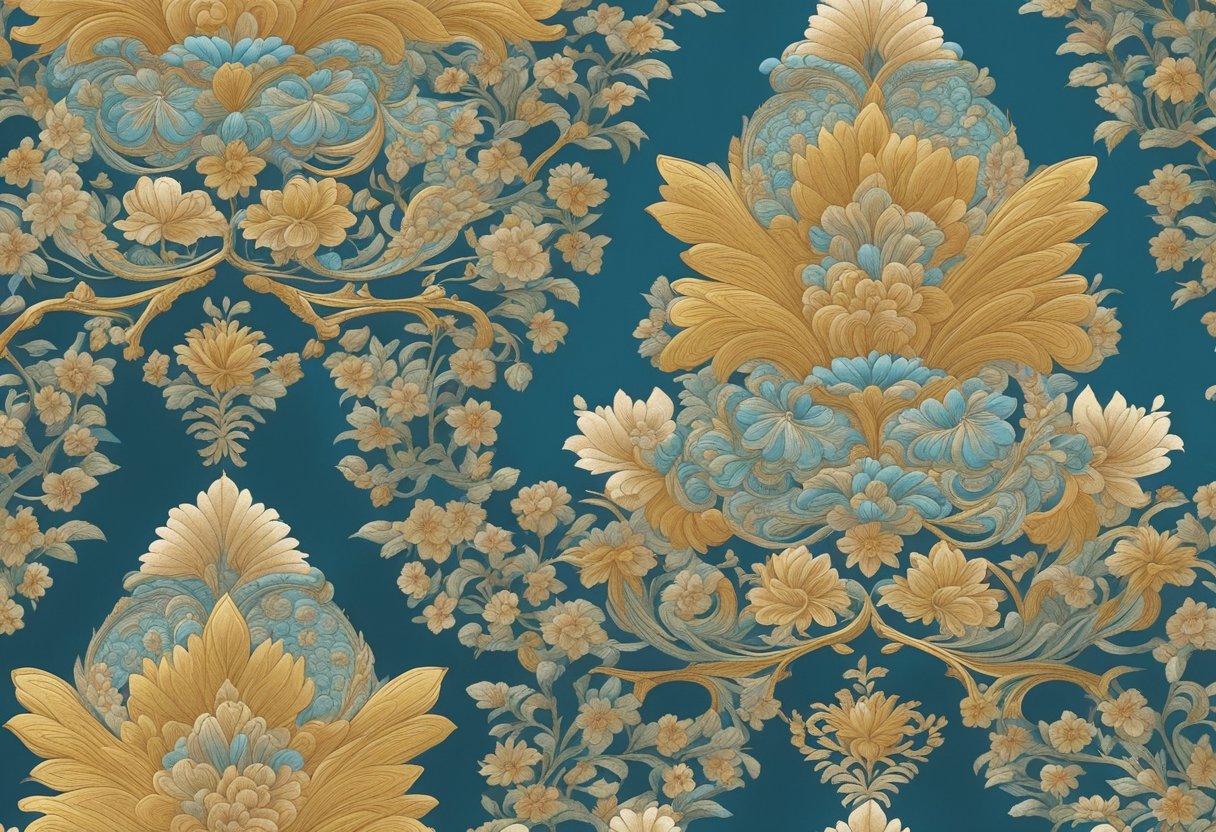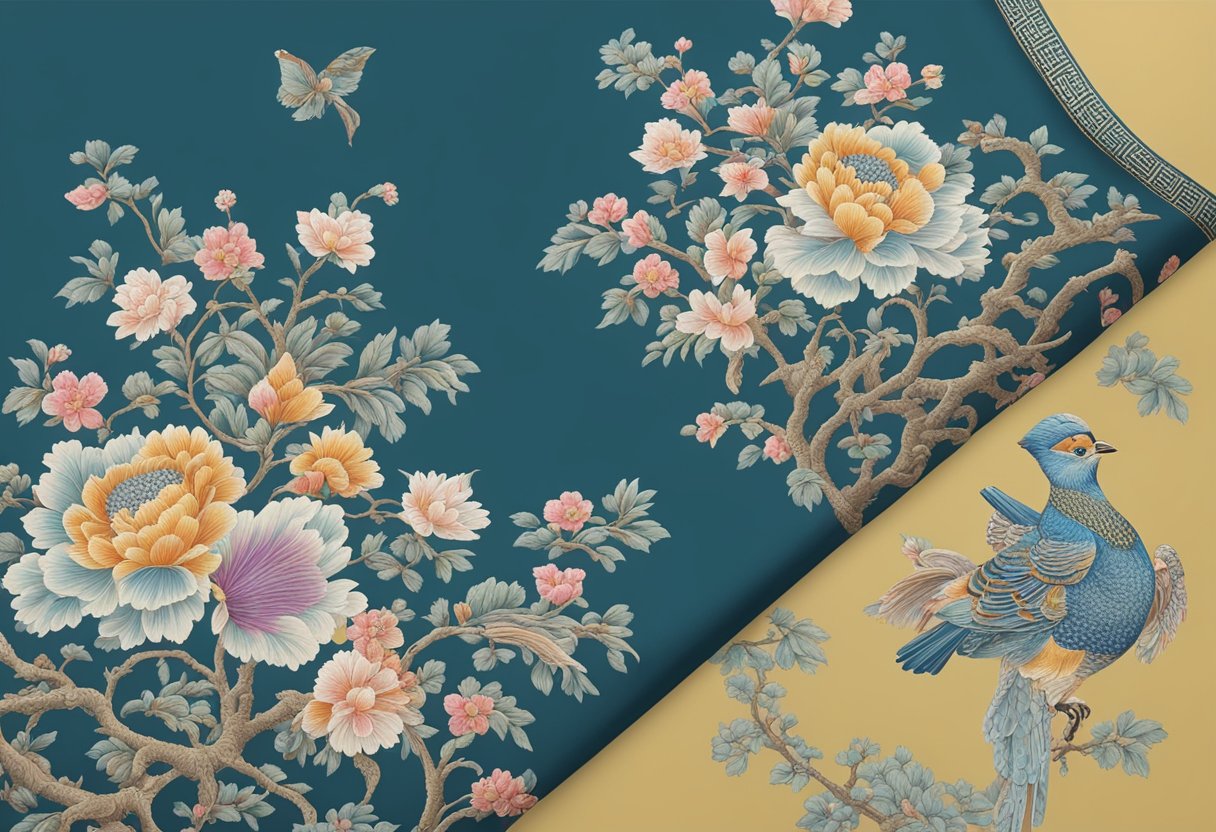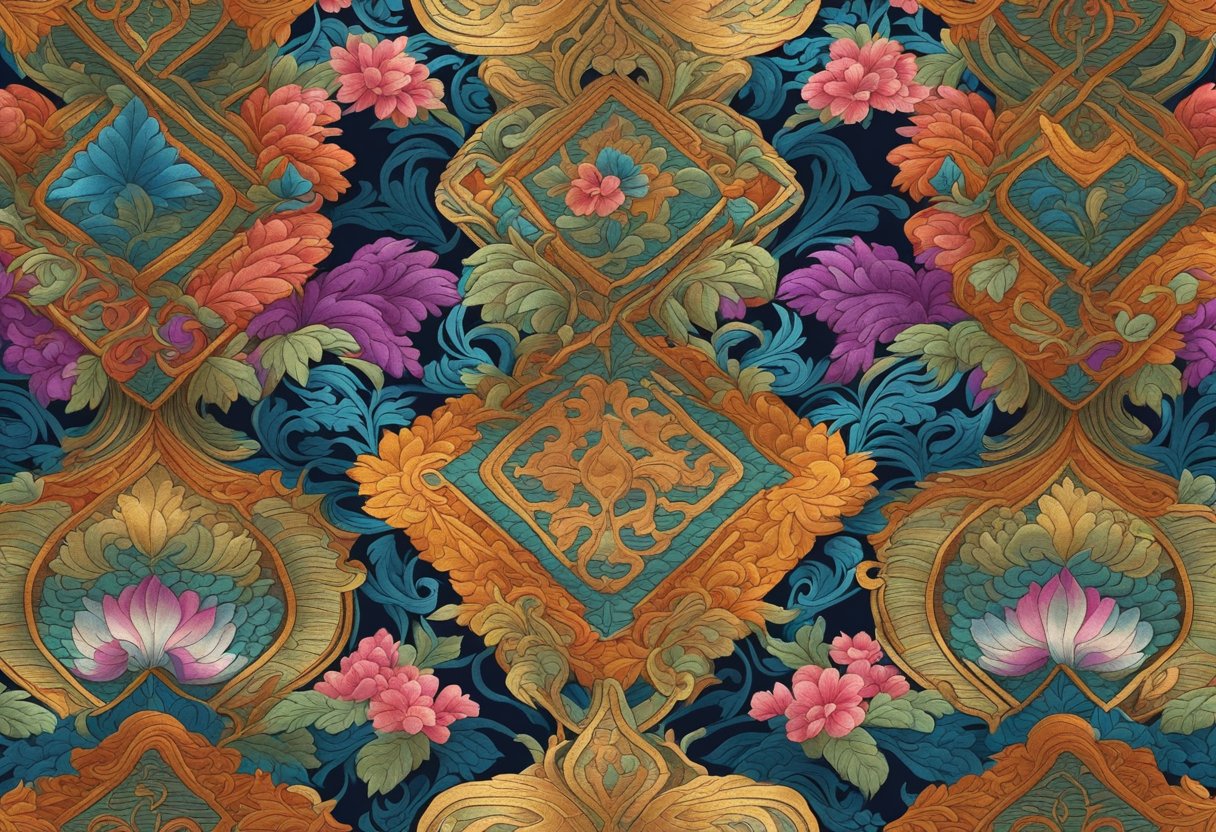Views: 0 Author: Joan Publish Time: 2024-02-01 Origin: https://taihusnow.com/








| 1 | The Essence of Silk Brocade |
| 2 | The Delicacy of Kesi |
| 3 | Comparative Analysis: Silk Brocade vs Kesi |
| 4 | Case Studies |
| 5 | Practical Guide for Buyers |
| 6 | FAQ |
Silk brocade, known for its luxurious texture and intricate designs, is more than just a fabric—it's an art form steeped in history. Let's unravel the threads of this magnificent material.
Did you know that the silken treasure kesi, or silk brocade, has roots tracing back to the Tang Dynasty around the 7th century? It's not just fabric; it's a piece of history! During the Southern Song period, kesi became a widespread phenomenon, hitting its stride throughout the Ming Dynasty and shimmering until the end of the Qing Dynasty in 1911.
What makes kesi stand out? It's all in the weave. This technique creates a lightweight tapestry celebrated for its clarity of pattern. You’ll find that kesi isn't some bulky quilt; its more like a delicate whisper of silk that can tell a story through its weave.
Silk threads are the stars of the show in brocade. The traditional kesi weave might use thicker threads, like in Nantong kesi, giving the fabric a unique spiral texture. Think of it as the silk having its own signature, like yours truly!
Patterns in silk brocade aren't just pretty; they're full of meaning. From depicting nature's bounty to illustrating legendary tales, each pattern has a story. Here's what you might find:
Lotus: Symbolizes purity and enlightenment.
Phoenix: Embodies power and good fortune.
Guess what? Silk brocade is not stuck in the past—it's strutting down modern runways! The fashion world loves to mix old and new, and brocade’s rich textures and patterns make it a go-to for adding a touch of opulence.
Picture this: a designer takes this ancient fabric and sews it into today's trends. Guo Pei, for instance, is known for blending traditional Chinese aesthetics with contemporary fashion, using brocade to create breathtaking modern pieces that whisper tales of the past.

Did you know that Kesi isn't just a fabric but a delicate art form steeped in history? This section will walk you through everything that makes Kesi so special, from its ancient origins to its unique weaving process.
Kesi, a refined silk tapestry, has its origins in the Tang Dynasty (618-907). Imagine the artistry and skill that have been passed down through the centuries! It initially served a practical purpose for protecting scrolls but soon evolved into backing for paintings, as it tends to other decorative uses.
What sets Kesi apart is its intricate “cut silk” effect, producing a clarity in its patterns that you typically won't see in other textiles. Each color area is separated, almost like meticulously laid out puzzle pieces, creating the illusion that they've been cut apart.
When it comes to thread count, Kesi can boast finer threads compared to many other fabrics. This isn't your average silk; think about these silky strands as the artisans do: each one holding the potential to create a masterpiece.
Literature often reflects the societal value placed upon Kesi, as it's frequently depicted as an emblem of affluence and prestige. You must have seen or read about this luxury fabric being referenced in various historical accounts and artistic expressions, evoking a sense of awe and admiration.
Consider how a single Kesi tapestry can tell a tale as intricate as a novel. For instance, a famous painting portrayed on Kesi might depict folklore or historical events, allowing its audience to witness a narrative woven in silk. Sadly, there's no specific painting or poem mentioned in our information, but imagine the stories that could be told!
Engage with this elegant fabric, and appreciate how every thread contributes to the broader picture of history and culture. Isn't it remarkable how something so delicate can hold such significance?

As you dive into the world of silk textiles, you'll notice that Silk Brocade and Kesi stand out for their beauty and craftsmanship. Let's roll out the details on how they stack up against each other.
Silk Brocade is typically characterized by its raised patterns, often giving it a textured, almost three-dimensional effect. The inclusion of gold or silver metallic threads can create a shimmering appearance, catching your eye with every turn. Kesi, on the other hand, prides itself on its flat, yet exquisitely detailed surface, with patterns appearing as if they are meticulously hand-embroidered.
The crafting of Silk Brocade involves a supplementary weft which adds depth and the embossed feel to the patterns. It’s like a visual magic trick with threads. With Kesi, you'll find a high level of intricacy: each color weft turns around only in its designated pattern area—a real testament to the weaver's skill!
Creating Kesi might test the patience of even the most seasoned weavers, as it demands precision and a well-honed technique. Silk Brocade is no less demanding, though. It requires a delicate balance between strength and finesse to incorporate the supplementary wefts without disrupting the base weave.
Silk Brocade often graces the stages of grand theatres and opulent celebrations, lending a touch of majesty to the ambiance. Kesi is a choice for those who appreciate understated elegance, typically used in artworks and high-end decor. They cater to different tastes but share a clientele that values handcrafted luxury.
Unfortunately, specific statistics regarding market demand or export rates for these textiles aren’t readily available. What we do know is that both Silk Brocade and Kesi have seen ebbs and flows in demand, much like any artisanal product, with resurgence typically tied to cultural rejuvenation efforts or global market interests in luxurious textiles.
In this section, we will dive into the exquisite world of silk brocade and Kesi, uncovering their unique roles in various realms from high-end fashion to traditional ceremonies.
Have you ever wondered what makes silk brocade and Kesi so coveted in the luxury market? Their intricate patterns and sophisticated techniques translate into opulent textiles that are often synonymous with affluence. Silk brocade, especially the intricate Kesi variety, often graces the runways, being the fabric of choice for designers aiming for that blend of tradition and exclusivity.
Demand: High among luxury brands for exclusivity
Price Point: Often at a premium due to the intricate production process
Recently, a renowned designer shared their experience working with silk brocade and Kesi. "It's the craftsmanship that stands out," they said. Every piece has a story, and you can really see the hours of labor and dedication woven into each fabric.
Favorite Aspect: The storytelling potential of textile
Design Challenge: Incorporating traditional textiles in modern fashion
Silk brocade and Kesi textiles hold a prestigious spot in ceremonies, often being sought after for their elegance and cultural significance. For instance, in certain cultures, garments made from these materials are considered heirlooms, passed down through generations.
Usage: Garments for weddings and important events
Symbolism: Represents cultural heritage and family lineage
Imagine attending a traditional wedding where the bride's gown is woven with the history of Kesi silk. The fabric tells a tale of legacy, with the radiance of silk brocade reflecting centuries-old traditions. Guests often can't help but admire the detailed workmanship and the continuity of culture encapsulated within the threads.

When you're on the hunt for luxurious silk brocade or kesi, it's like searching for a gem in a sea of fabrics. Each thread tells a story, and you want yours to epitomize elegance and authenticity. Here's how you can make sure you're getting the best bang for your buck.
To distinguish the high-quality silk brocade and kesi you deserve, texture and pattern play key roles. For brocade, look for:
A raised design that feels slightly thicker to the touch than the base fabric.
Vibrant colors that are consistent throughout the fabric, showing that quality dyes were used.
When it comes to Kesi, keep an eye out for:
Clean lines within patterns that create a sense of depth.
A 'double-sided' appearance, meaning the design is just as detailed on the back of the fabric.
Your silk treasures require tender love and care. For both silk brocade and kesi, remember:
Keep them out of direct sunlight to avoid color fading.
When not in use, store them in a cool, dry place and use acid-free tissue paper for wrapping.
Silk brocade and kesi are not your average fabrics, so they can't be treated as such. Follow this guide to keep them in pristine condition:
Hand wash in cold water with a mild, silk-friendly detergent.
Gently agitate the fabric in the water. Don't wring or twist; it's all about being gentle.
Rinse thoroughly until the water runs clear.
Air dry by laying the fabric flat on a clean towel, away from heat sources.
Remember, these silken threads are more than materials; they carry a legacy of craftsmanship, so handle with the admiration they deserve!
Curious about the intricacies of Silk Brocade and Kesi? Let's unravel the threads of these exquisite Chinese textile arts and uncover what makes them so significant and valued.
Silk Brocade is a luxurious fabric woven with colorful silk threads and often with gold and silver threads, creating an embossed effect. Kesi, on the other hand, is a tapestry weave known for its delicate patterns and translucency, resembling precisely cut threads. Both are intricate, but their weaving techniques and visual impact set them apart.
Patterns in these textiles are not just for aesthetics; they often carry cultural significance. Dragons, phoenixes, and lotus flowers in Silk Brocade symbolize power, renewal, and purity. Kesi weavings, with historical and mythological scenes, serve as narratives preserving and reflecting Chinese traditions and stories.
To assess the value, you’d consider historical context, craftsmanship, and condition. The rarity of the piece and the era it represents contribute significantly to its value. Expert weaving, fine silk threads, and preservation of colors also indicate high-quality, sought-after tapestries.
Traditional Chinese tapestry art showcases multiple weaving techniques. Weft-faced weaving, where horizontal threads dominate, is common in Silk Brocade. Kesi weavings are characterized by their slits between color areas due to the weft threads being woven separately. These techniques require immense skill and produce distinctly different textures.
Collectors should look for high-quality silk, vibrant colors, and intricate designs that are often symmetrical. The presence of traditional motifs and historical scenes adds to the piece's authenticity. Additionally, the overall craftsmanship, including the fineness of the weave, is a telltale sign of a tapestry's worth.
Kesi is a reflection of traditional Chinese culture through its depiction of historical narratives, intricate patterns, and symbolism. It's a craft where each woven piece encapsulates cultural tales and artisan dedication, often showcasing imperial and folk scenes in their timeless beauty.
